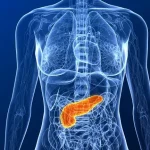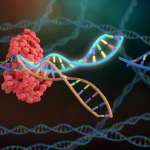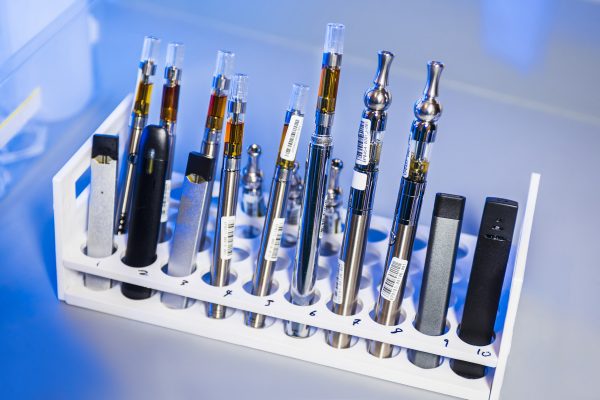by: Paige McGarry
Recent developments in the gene-editing technology CRISPR-Cas have introduced incredible advancements in diagnostic procedures. As of late, the SARS-CoV-2 virus has impacted more than 215 countries around the world, and with no evident cure, the virus is leaving destruction in its wake. The diagnostic abilities of CRISPR-Cas pose potential solutions towards solving this global pandemic. A variation, Cas 13, has been engineered against COVID-19. However, to this day no CRISPR-based technology has been approved for human use. Much effort has been directed to investigate the challenges and benefits of CRISPR-Cas in aiding future clinical assessments and advancements.
CRISPR and its associated proteins Cas is a gene-editing technology that allows geneticists and medical researchers to edit parts of the genome in any living organism by removing, adding, or altering sections of the DNA sequence. Cas proteins display a prokaryotic adaptive immune system that memorizes previous infections by integrating short sequences of invading genomes—termed spacers—into the CRISPR locus. The spacers interspaced with repeats are expressed as small guide CRISPR RNAs (crRNAs) that are employed by Cas proteins to target an invader’s sequence, specifically upon a reoccurring infection. The ability to target specific DNA sequences using programmable RNAs has introduced a completely new approach to gene editing technologies and is limitless in the potential for therapeutic applications.
Recent research performed by a variety of geneticists in India is extremely interesting because it has applied the therapeutic potential for CRISPR-Cas to diagnostic and preventative treatment research for COVID-19. The initial gene-editing application of CRISPR-Cas was recognized for its potential usage in developing antiviral therapies. Later, CRISPR diagnostics revolutionized point-of-care treatment enabling the accurate and rapid identification of any pathogen in clinical settings.
CRISPR-Cas has often been used as a laboratory tool to edit defective DNA and RNA sequences, fixing deficient sections of DNA and enhancing desired genetic traits. In more recent years, scientific communities have globally accepted this technology to eliminate viruses in human cells. As of now, no specific SARS-CoV-2 is available to cure COVID-19. However, the study indicated that the CRISPR/Cas13d system has been recently introduced to target RNA molecules, and researchers have further proposed the use of this system to specifically degrade the SARS-CoV-2 RNA genome by designing crRNAs targeted to attack and degrade specific genes of the virus. The unique nature of the CRISPR-Cas13 system does not depend on PAM-like sequences, which are short DNA sequences required for Cas nuclease to target cut sights. This enables CRISPR to target evolving viruses. Furthermore, after the worldwide outbreak of the COVID-19 pandemic, there was an immediate need for timely diagnostic techniques. CRISPR-based tools may overcome this issue, as these tools have shown significant detection efficiency within 30–60 min. However, they are still awaiting approval from the US Food and Drug Administration (FDA).
This contribution to the field, while not yet complete, allows medical professionals worldwide the potential for completely redefining the way viruses and pandemics are treated, diagnosed, and handled. Events such as the Jiankui scandal in China have encouraged further productive conversations between individuals regarding what will and will not be accepted with this gene-editing technology. Dr. Megan Hochstrasser provided insight into this global conversation by explaining, “You have to separate the technology itself from the things you could do with the technology. I don’t think there will be blanket acceptance of the technology, but people will certainly accept some uses of it.” Additionally, Hochstrasser explained, “There are varying opinions on what is ethical to do with CRISPR. Most people are in favor of medical applications. For example, if you have a very severe disease with few treatment options, CRISPR could make sense. The main thing that people get opposed to is using CRISPR for enhancement or editing embryos, sperm, or eggs which will be inherited by subsequent generations. However, there is a little more acceptance if this editing is purely for medical purposes.” Further research will help scientists continue to navigate the ethical challenges and understand how the CRISPR-Cas system and its variants can be used to treat specific issues in precision medicine, all the while eliminating cost and time from medical treatment and diagnosis.








